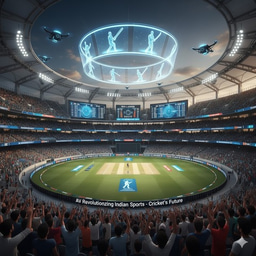Sustainability in AV, Conferencing & Collaboration, Digital Signage, Learning Solutions, Business of AV, and 8 more
Consumer Smart TVs vs. Commercial Smart Displays
This guide explores the critical differences between consumer and commercial displays, the risks of misusing residential models in professional spaces, and why understanding these distinctions is essential for AV integrators, IT managers, and business decision-makers.

1. Definition & Primary Use
| Feature | Smart TV | Commercial Display |
|---|---|---|
| Purpose | Consumer-grade entertainment | Business, signage, and professional AV |
| Use Case | Home use – streaming, casual gaming | Meeting rooms, signage, 24/7 display, video walls, retail, education |
2. Hardware & Build Quality
| Feature | Smart TV | Commercial Display |
|---|---|---|
| Build | Lighter duty | Robust, industrial-grade components |
| Cooling | Passive (limited ventilation) | Active or enhanced cooling |
| Orientation | Landscape only | Portrait & landscape (multi-orientation) |
| Bezel | Thick bezels | Ultra-narrow bezels (for video walls) |
3. Display & Performance
| Feature | Smart TV | Commercial Display |
|---|---|---|
| Brightness | 250–400 nits (indoor) | 500–3000+ nits (high ambient lighting) |
| Color Calibration | Consumer-friendly | Factory calibrated for color uniformity |
| Panel Lifespan | ~30,000–40,000 hrs | 50,000–100,000 hrs (24/7 capable) |
| Refresh Rate | Standard (60Hz) | May offer 120Hz+, low-latency modes |
4. Software & Control
| Feature | Smart TV | Commercial Display |
|---|---|---|
| OS & Apps | Android TV, Tizen, WebOS (app centric) | Embedded signage OS or SoC (e.g., Samsung Tizen Pro, LG webOS signage) |
| Remote Management | Limited or none | Yes, via RS232, LAN, Crestron/Extron compatible |
| Scheduling | Basic | Professional content scheduling, CMS integration |
| Custom Firmware | Not Available | Supported by manufacturer or integrators |
5. Connectivity & Inputs
| Feature | Smart TV | Commercial Display |
|---|---|---|
| HDMI Ports | 2–4 ports | Multiple professional-grade inputs (HDMI, DisplayPort, DVI, VGA, SDI) |
| RS232/Control Ports | Rare | Standard in commercial units |
| Video Wall Support | No | Yes (Daisy chaining, bezel compensation) |
| OPS Slot | No | Often included for PC modules or AV cards |
6. Reliability & Warranty
| Feature | Smart TV | Commercial Display |
|---|---|---|
| Usage Hours | Designed for 6–8 hrs/day | 16/7, 24/7 rated models |
| Warranty | 1–2 years (consumer only) | 3–5 years (onsite, commercial support) |
| Burn-in Risk | High for static images | Mitigated with pixel shifting & heat management |
7. Cost & TCO (Total Cost of Ownership)
| Feature | Smart TV | Commercial Display |
|---|---|---|
| Initial Cost | Lower | Higher upfront |
| Maintenance | Limited support | Long-term, reliable support |
| ROI | Short-term gain | Long-term investment |
8. Ideal Applications
| Smart TVs | Commercial Displays |
|---|---|
| Homes, dorms | Digital signage |
| Budget installs | Boardrooms, control rooms |
| Light use retail | Kiosks, hospitality, public venues |
| Temporary setups | Airports, malls, hospitals |
Conclusion
-
Choose Smart TVs if: you're on a budget, need basic display use for 6–8 hours/day, and don't require control or automation.
-
Choose Commercial Displays if: you need reliability, 24/7 operation, remote management, signage, control integration, or video wall setup.
Common Question:
If I use Consumer display in commercial space will warranty of that display will be void? If yes, why?
Yes, in most cases, if you use a consumer-grade display (Smart TV) in a commercial or business environment, the manufacturer warranty will be void or limited.
Here's why and how it works:
Manufacturer Warranty Policies
| Brand | Consumer Display in Commercial Use | Warranty Status |
|---|---|---|
| Samsung | Not covered under standard warranty | Void |
| LG | Only covered if used in home setting | Void |
| Sony | Consumer Bravia not warranted for business use | Void |
| Panasonic, TCL, Vizio, Hisense, etc. | Consumer warranty only valid in residential use | Void or Very Limited |
Many brands now clearly state in their warranty terms:
“This warranty does not apply to units used in commercial or institutional settings.”
What Happens If You Use a Smart TV in a Commercial Space?
-
If it fails during commercial use, and the manufacturer inspects or confirms the environment (via usage logs, serial scans, or technician visits), they may refuse service, even during the warranty period.
-
Some brands may offer a paid repair option, but you lose free parts and labor coverage.
How to Avoid Warranty Issues
-
Buy Commercial Displays (like LG UH series, Samsung QB/QM series, Sony BZ Pro series).
-
If you're still choosing a consumer TV for cost:
-
Use it for less than 8 hours/day
-
Avoid static content to prevent burn-in
-
Use surge protectors
-
Accept the risk of self-warranty or 3rd-party coverage
-
-
Some suppliers offer extended or 3rd-party warranties for consumer displays used commercially — ask your vendor.
-
Xchange Advocates are recognized AV/IT industry thought leaders and influencers. We invite you to connect with them and follow their activity across the community as they offer valuable insights and expertise while advocating for and building awareness of the AV industry.
Recommended Content
Immersive Experiences, Sustainability in AV, AI in AV, Broadcast AV, Command and Control, Digital Signage, Live Events / Performance Entertainment, Business of AV, A Culture of Inclusion, Celebration of AV Excellence, InfoComm, Sustainable AV , AV/IT Buyers, AV Education for The Next Generation, Xchange Advocate Room
AV for Sports Industry in India with Cricket Prospective






Please sign in or register for FREE
If you are a registered user on AVIXA Xchange, please sign in
Bookmarking this for future reference, we've been using the newest Samsungs with auto on/off and leveraging Samsung Smart Things for remote control!